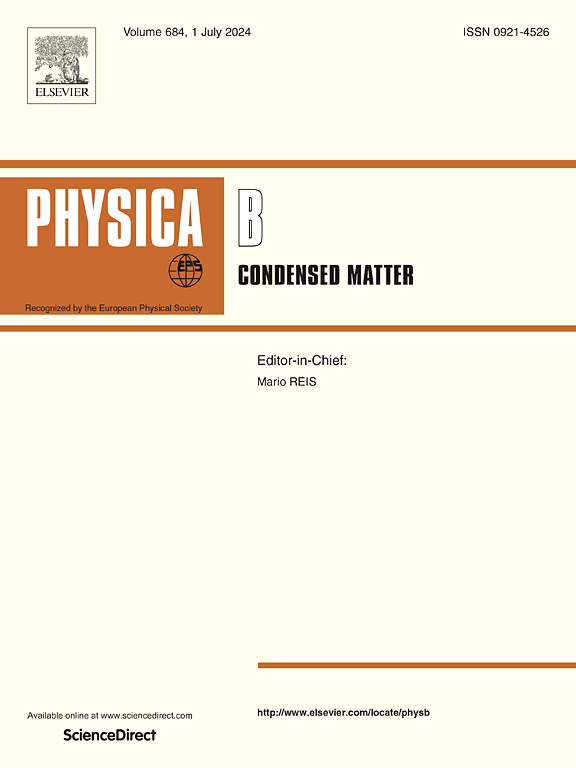Study on the microstructure strengthening mechanism of W-doped Fe-B alloy based on first principles
IF 2.8
3区 物理与天体物理
Q2 PHYSICS, CONDENSED MATTER
引用次数: 0
Abstract
This study uses first-principles calculations to explore the impact of W doping on the mechanical properties of Fe2B in Fe-B alloys and the Fe/Fe2B interface. The results show that W doping lowers the formation energy of Fe2B from −5.8626 eV/atom to −6.9875 eV/atom for Fe2W6B4, and the formation energy of the new phase W2FeB2 is −6.3862 eV/atom. W doping reduces the hardness of Fe2B but significantly enhances its fracture toughness, increasing it from 2.5934 MPa m1/2 for Fe2B to 3.5729 MPa m1/2 for FeW7B4 and 3.5370 MPa m1/2 for W2FeB2. The Fe/Fe2B interface exhibits stronger bonding than the Fe/W2FeB2 interface, and W doping further improves the interfacial bonding of the Fe/(Fe,W)2B interface. Overall, W doping enhances the wear resistance of Fe-B alloys by improving both phase stability and interfacial bonding.
求助全文
约1分钟内获得全文
求助全文
来源期刊

Physica B-condensed Matter
物理-物理:凝聚态物理
CiteScore
4.90
自引率
7.10%
发文量
703
审稿时长
44 days
期刊介绍:
Physica B: Condensed Matter comprises all condensed matter and material physics that involve theoretical, computational and experimental work.
Papers should contain further developments and a proper discussion on the physics of experimental or theoretical results in one of the following areas:
-Magnetism
-Materials physics
-Nanostructures and nanomaterials
-Optics and optical materials
-Quantum materials
-Semiconductors
-Strongly correlated systems
-Superconductivity
-Surfaces and interfaces
 求助内容:
求助内容: 应助结果提醒方式:
应助结果提醒方式:


